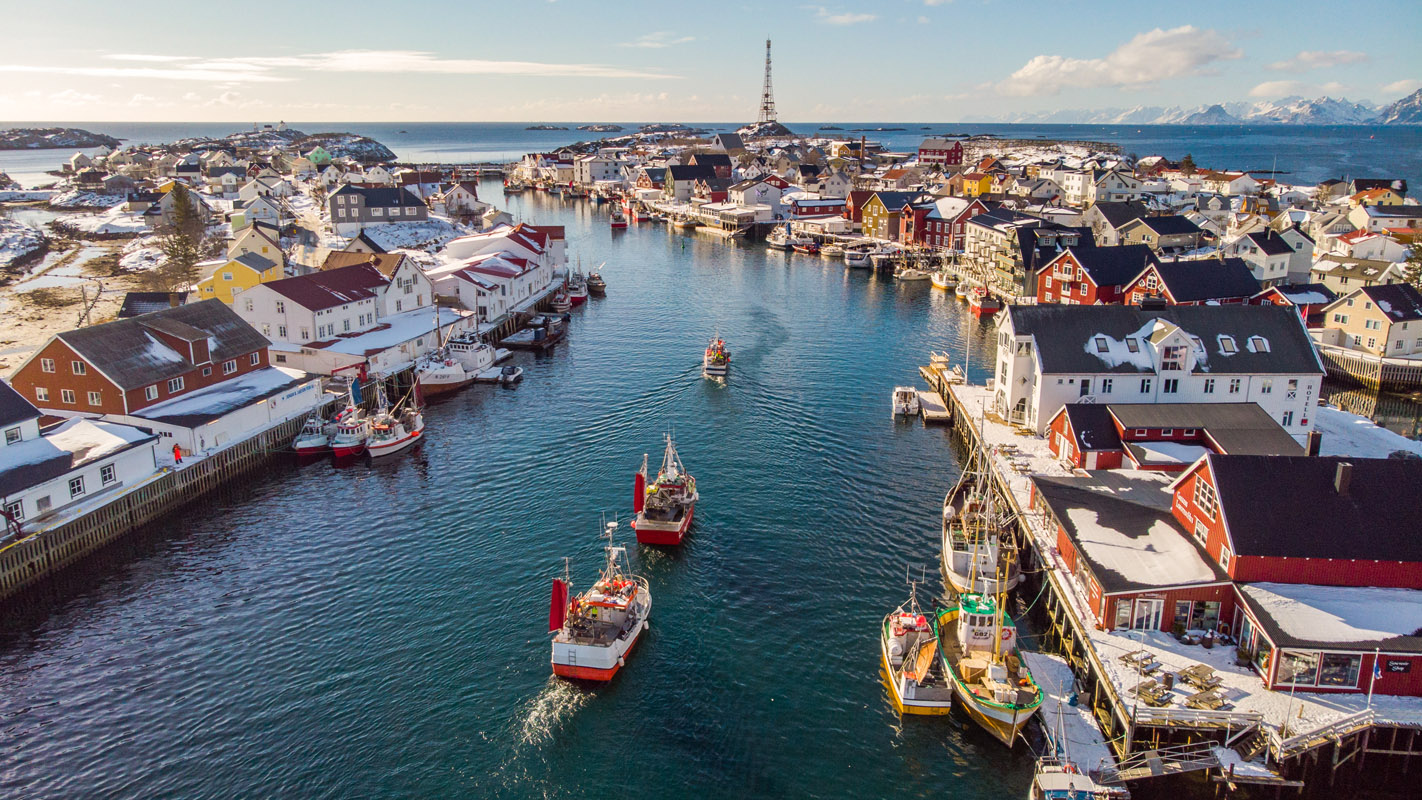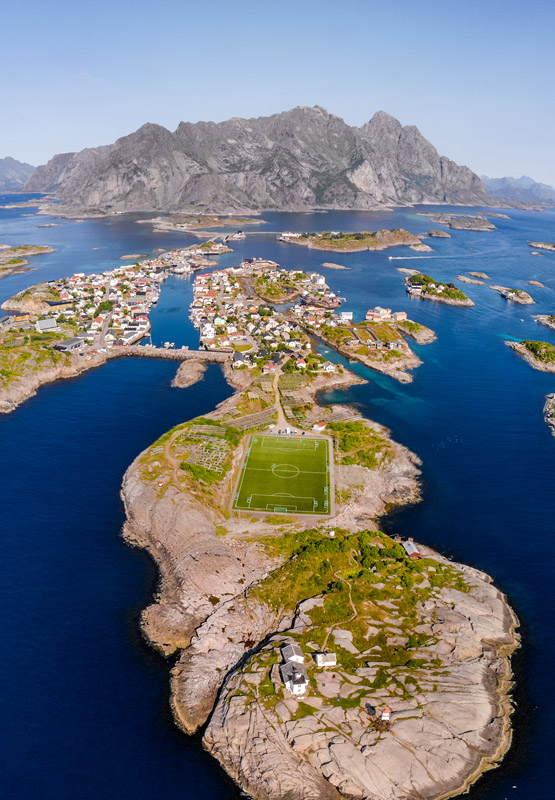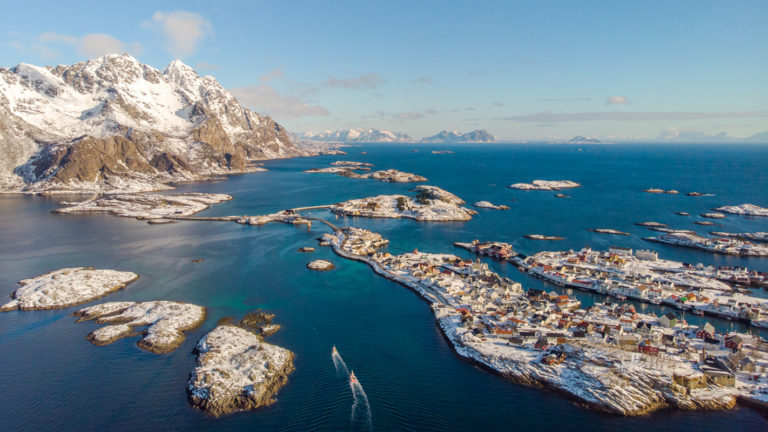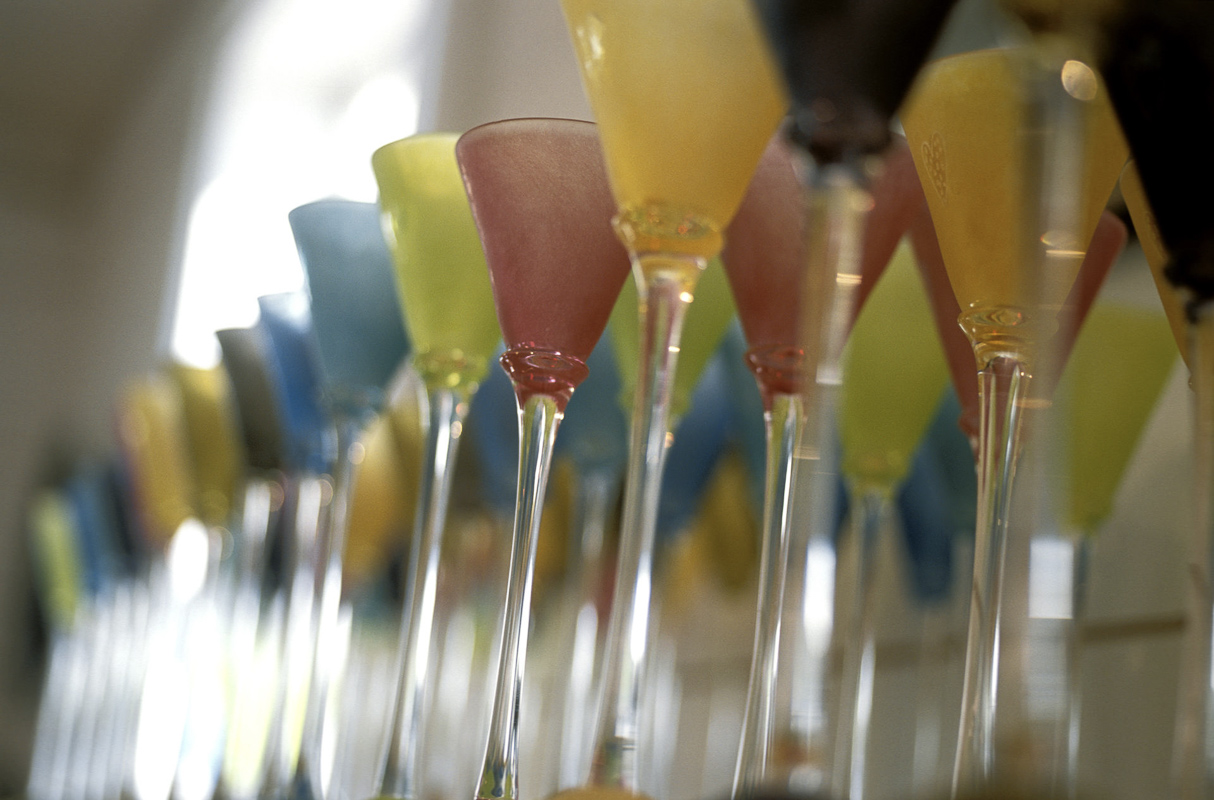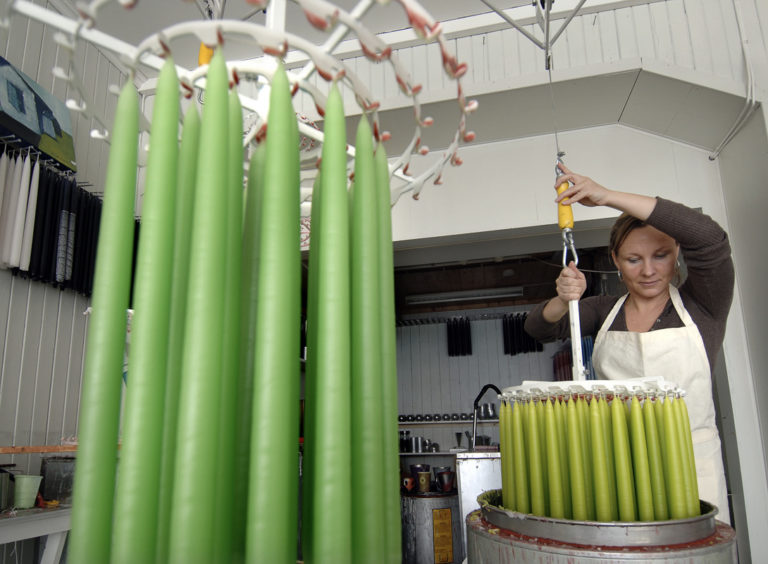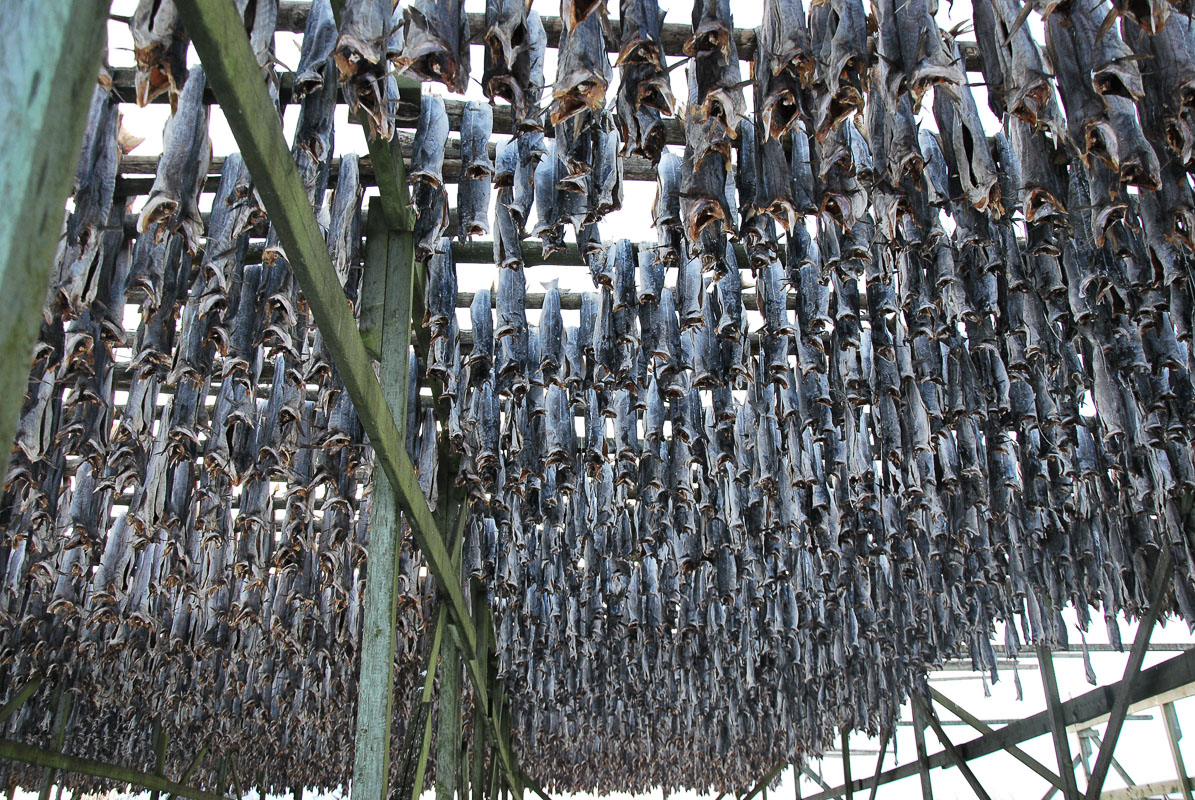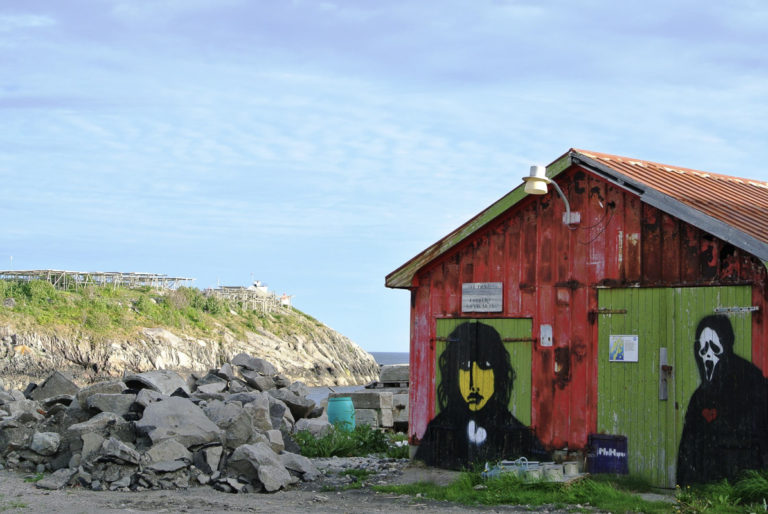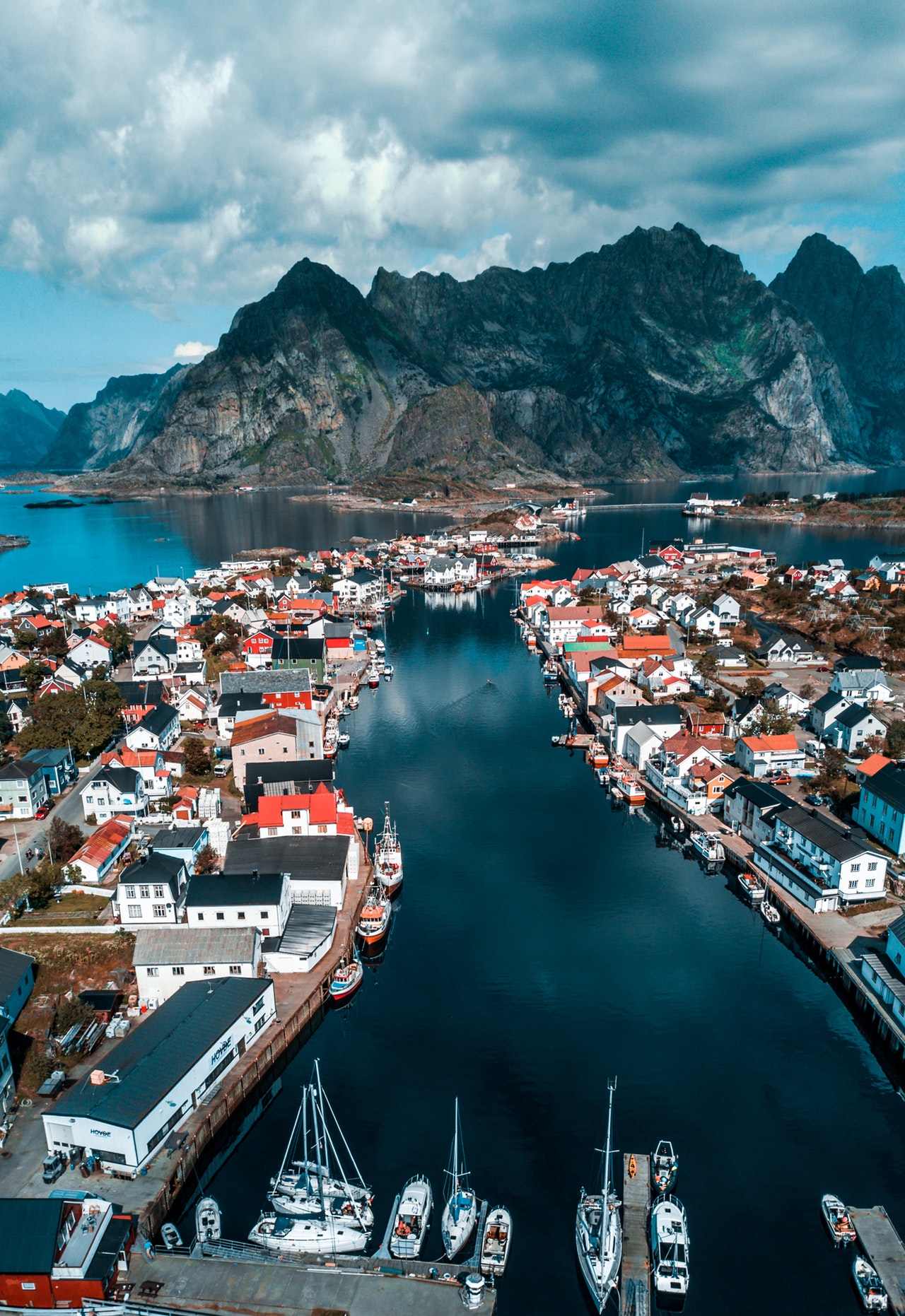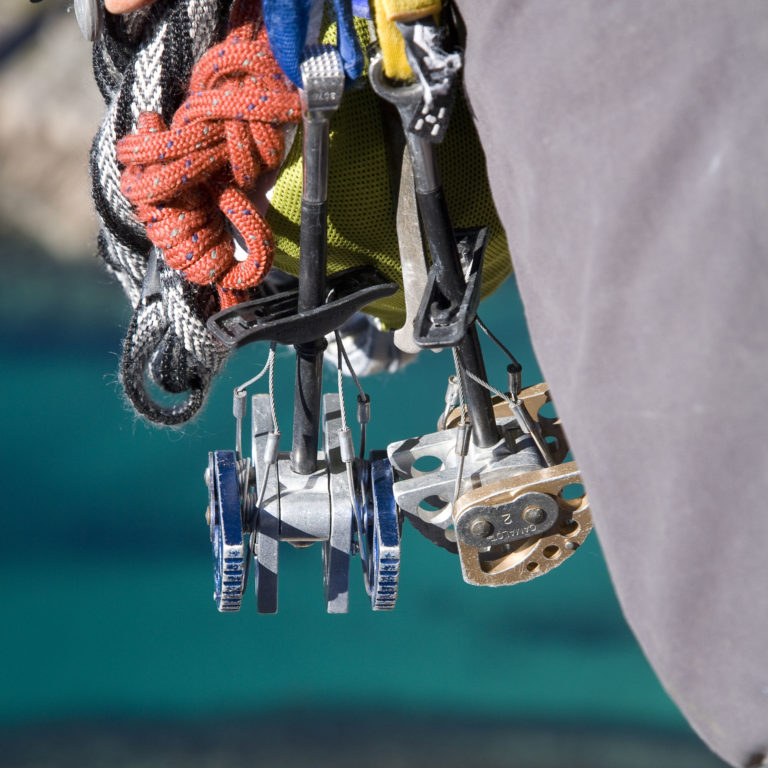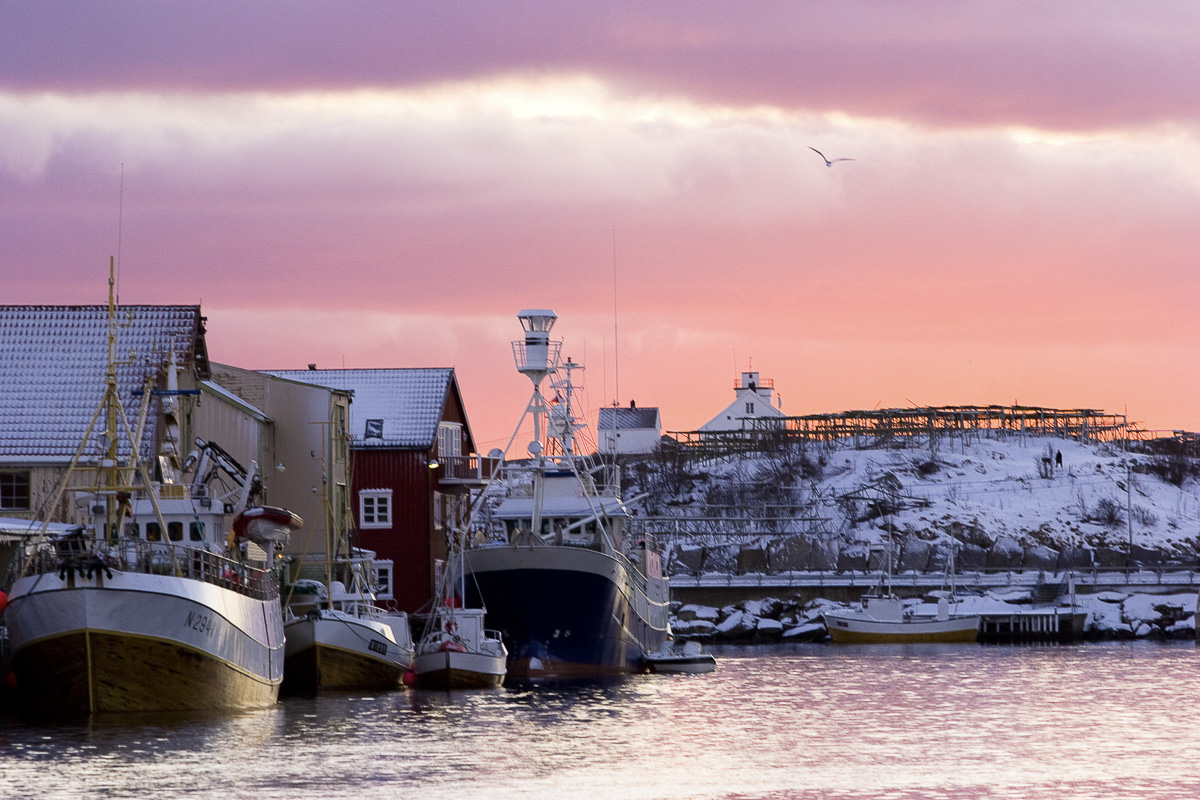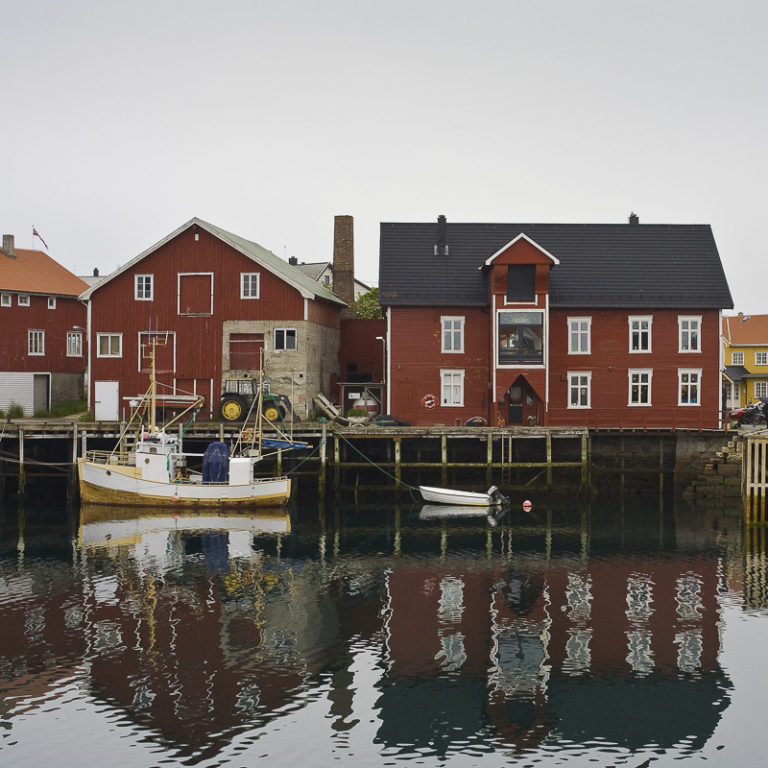The dried fish destined for Italy and the fish heads waiting to become fish soup in Nigeria sum it up; Henningsvær is a village that is both totally homegrown and very global. Let us take you on a stroll around this fishing village with a twist.
For more than a century, Henningsvær has in Lofoten been one of the busiest fishing villages along the coast. In the important winter fishing, the port of Henningsvær has been the place to land fish, gossip about fish prices, and feel the pulse of this yearly coastal bonanza. The richest and most financially independent kids in the country have saved up for bikes and computer gadgets by working way too many hours cutting cods tongues. Lately, fish processing has become more antiseptic, isolated from the rest of society, and invisible to the eye. Henningsvær has compensated slightly by letting in artists, craftsmen, and tourists, but without losing its character and personality.
Henningsvær is your perfect fishing village
In the Northern Norwegian dialect, we have this work “vær”, or “fiskevær”. It means a fishing village. A typical fishing village has a sheltered port, one or many fish factories, and a dense maze of houses around. No place has more of a “fiskevær” feel than Henningsvær, built on several islands, surrounding the port. Facing the port are old warehouses and fish factories, from the time when great amounts of fish were landed here. Some of them have been converted into hotels, galleries, and restaurants. Tourism creeps in, providing jobs in the summer season when fishing is on a low.

Don’t plan your vacation away
Save time and let the local experts at Visit Lofoten help you in your planning
Even the way there is breathtaking
These days, you can drive or take the bus all the way, driving along rocky coastlines with big boulders and almost vertical cliffsides. The finale is the elegant one-lane bridge replacing the ferry in 1983. There is also a water pipeline across, so that people don’t have to row across the sound to “Vass-Lovise” (Water Louise) who made her living from selling water to the islanders. If you find a little lay-by, jump out of the car to capture the arch of the bridge with your camera.
Go for a walk around Henningsvær
Well arrived, you start the walk on the western side of the port. Henningsvær is a mix of old and new, stylish and charmingly homegrown. There is hardly a straight line anywhere, and hardly two houses next to each other that match in colours, style or size. When you walk around, keep in mind that people actually live here. We sometimes do insensitive things like looking into peoples’ living room or go into private gardens when we are in environments that are totally different from home. Therefore, walk like you would in the street back home, and give the locals a nod (don’t bother with the “good afternoon” bit, we’re not that formal).
You start on Heimøya Island
The Galleri Lofotens Hus is close to the bridgehead on the western Heimøya Island, and you soon arrive at a little square with “Joker’n”, the little local shop where you can also have coffee in a paper cup. The main road is a narrow, winding thing, and when a car comes, you have to stand close to a house while the driver carefully passes by. The Caviar factory is a little detour to the right. Passing the Engelskmannsbrygga craft centre, the candlemaking factory and the Lofotmat delicatessen, you’re almost to the breakwater. Here you make another detour to the right, slightly uphill, to the Henningsvær Church, a modern church shaped like the fishracks that surround it. If you get here between March and June, the fishracks are full of cod, complete with cod heads hanging down in a rope. The rest of the year the empty racks make fabulous photo motives.
From the breakwater, you see it all
The breakwater is the number one photo op in Henningsvær. Here the entire port with docks, wharf houses and boats mirror in the quiet waters of the port. The grand finale is Mount Vågakallen, the 942 metre high mountain looming over Henningsvær. If you look closely, there is a little natural cross at the top, which is interpreted as a little man carrying a pair of oars. When the boys participated in the Lofoten fishing for the first time at age 14, they were forced by the seasoned fishermen to take off their hat to honour “Vågakallen” – the man carrying the oars.
The world’s most beautiful football field is found in the middle of the ocean
Across the breakwater, you come to a more of a residential area, situated on several small islets connected with landfillings . Walk around between the oddly placed houses, sheds and boathouses, take photographs of Mount Vågakallen as it appears between the houses and listen to the seagull cries. The soccer field is the furthest afield on its own separate island. Surrounded by bare cliffs and roaring seas, the astro turf invites to a football match all year round.
Galleri Lofotens Hus – Art discovers Lofoten
“Lofoten is as devoid of natural beauty as you can ever imagine”, the Southern Norwegian civil servant Gustav Blom declared in 1827 upon sailing across to the islands. Back then, landscape beauty meant fields, idyllic farm houses and greenery, and Lofoten is the exact opposite. However, from the artist Peder Balke’s voyage northwards about 1840 onwards, Art discovered Lofoten. When walking around Galleri Lofotens hus, you see the landscape of Lofoten and the Lofoten fisheries documentet by some of the leading Norwegian painters of the 19th C.
The new art is found in the old caviar factory
The exact opposite is the Caviar Factory, a gallery housed in a caviar factory from the 1950’ies. The stark brick and concrete has been stripped from later alterations and is now a modern, bright and airy exhibition room. Every year, a new exhibit of contemporary art is presented, with some of the great names from the Norwegian and international art scene. The opening of a new exhibit is always a big event in art circles.
At Engelskmannsbrygga glass is blown
The old fish warehouse of Engelskmannsbrygga (“wharf of the Englishman”) has been turned into an arts and crafts community. Two glass blowers, two potters and a photographer have joined forces, producing their goods on the premises.
There is something fishy about the restaurants
Of course, you will not starve in Henningsvær. The oldest establishment is Fiskekrogen, a merry eatery on the dockside. One of their absolute favourites on a summer evening are the shells steamed in Lofoten IPA, but whale ravioli and traditional creamy fish soup are much loved too. A stylish alternative is “Den blå fisk”, – The blue fish – overlooking the port from large windows. Trandamperiet is an old cod liver oil factory that has been converted into a restaurant and delicatessen. Lofotmat has made what used to be everyday food in the north into gourmet food you can take home or eat there.
You risk to buy something in Henningsvær
Do you ever buy anything when you travel? I never do, as I have more than enough stuff. Chances are, however, that you end up buying something in Henningsvær, as the shopping on offer is of the unique kind. Fleeting pleasures like a whole smoked cod roe at Trandamperiet, the home made caviar from the Lofotmat delicatessen or the handmade candles at the candle factory make excellent gifts. You will look good for many years if you buy the beanies at Haddock, available in many colours. Craft from Engelskmannsbrygga is made to last.
Climb that mountain
Vågekallen is a tough and challenging mountain with precipitous cliffs, one that only seasoned travellers should dare doing. However, the Festvågtinden next to it is an easier climb, but of course there is a lot of uphill there too. It awards you a bird’s eye view of Henningsvær and a panorama along the entire chain of islands. The steep cliffsides around Henningsvær have made it a little hub for the mountain climbers.
Practical about Henningsvær
Henningsvær is found in the municipality of Vågan, where Svolvær is the centre, in the archipelago of Lofoten, again in the county of Nordland.
There are several buses from Svolvær through Kabelvåg to Henningsvær, but you should still plan your day trip carefully on the website ENTur. You can drive there in half an hour from Svolvær.
Indeed. There is a good choice of accommodation, ranging from budget to first class. Consult the Lofoten Info website for all the details.
Activities such as climbing, kayaking, fishing etc, and the opening hours of attractions are all to be found on the website of Lofoten Info.
